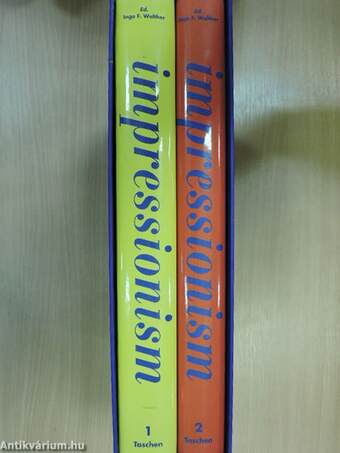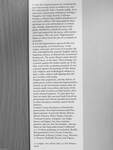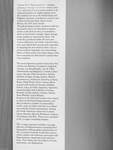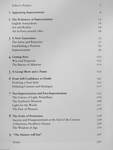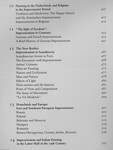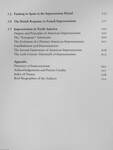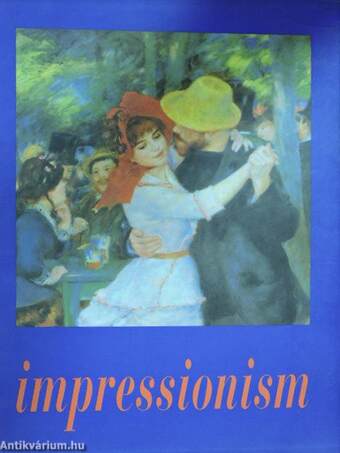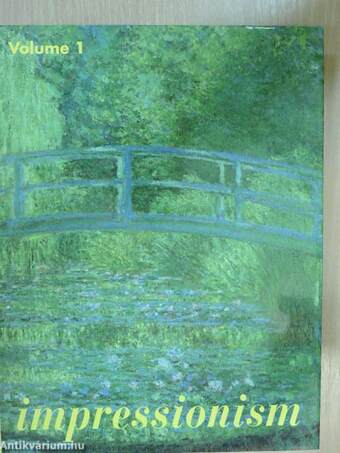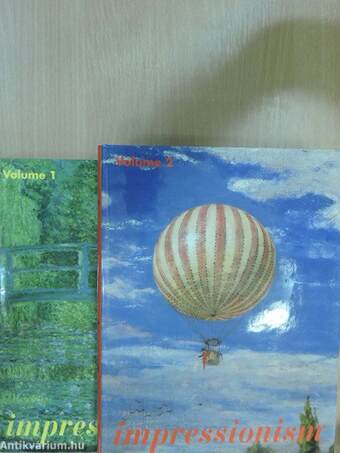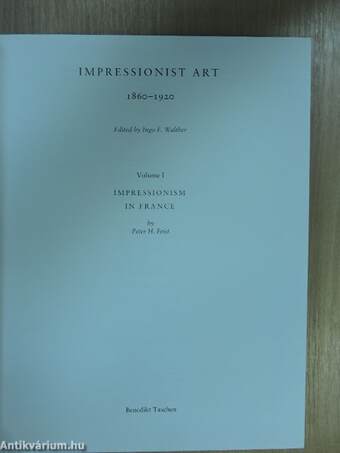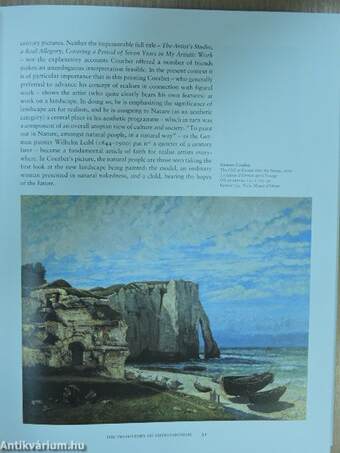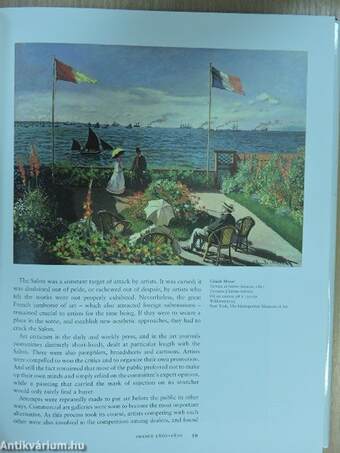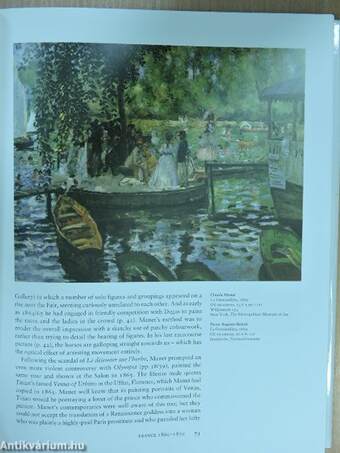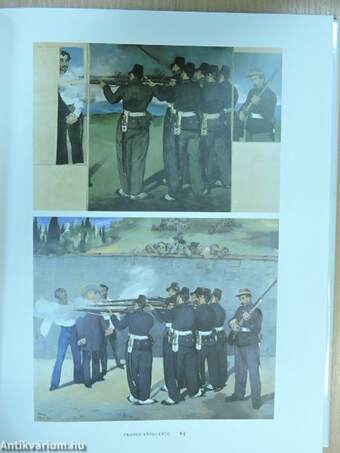1.066.456
kiadvánnyal nyújtjuk Magyarország legnagyobb antikvár könyv-kínálatát

VISSZA
A TETEJÉRE
JAVASLATOKÉszre-
vételek
Malerei des Impressionismus 1860-1920 I-II.
Az impresszionista festészet 1860-1920 I-II. - Impressionist Art 1860-1920/Volume I: Impressionism in France/Volume II: Impressionism in Europe and North America
| Kiadó: | Benedikt Taschen Verlag GmbH |
|---|---|
| Kiadás helye: | Köln |
| Kiadás éve: | |
| Kötés típusa: | Vászon |
| Oldalszám: | 712 oldal |
| Sorozatcím: | |
| Kötetszám: | |
| Nyelv: | Angol |
| Méret: | 32 cm x 25 cm |
| ISBN: | 3-8228-9654-3 |
| Megjegyzés: | Színes és fekete-fehér reprodukciókkal. Eredeti védődobozban. További kapcsolódó személyek a kötetben. |
naponta értesítjük a beérkező friss
kiadványokról
naponta értesítjük a beérkező friss
kiadványokról
Fülszöveg
To this day, Impressionism has remained the
most fascinating epoch in modern art, and
the most popular with a broader public. In re-
cent years, spectacular exhibitions of Degas,
Gauguin, van Gogh, Renoir, Toulouse-
Lautrec or Monet have pulled attendances of
over half a million. The sums paid for their
paintings are now astronomical. A century
ago, though, Impressionist art was avant-
garde, derided by a shocked society, ridi-
culed and rejected by the press, with enemies
everywhere. The very term "Impressionist"
began as abuse from the pen of a waspish art
journalist.
It was the Impressionist approach that was
so avant-garde, so revolutionary. Land-
scapes, cityscapes and scenes of everyday life
were atmospherically painted, brightly and in
luminous colours, in distinctively economical
brushwork. The artists liked to paint directly
from Nature, in the open. Their strategy was
a protest against the leaden studio art of the
time, such as the academies... Tovább
Fülszöveg
To this day, Impressionism has remained the
most fascinating epoch in modern art, and
the most popular with a broader public. In re-
cent years, spectacular exhibitions of Degas,
Gauguin, van Gogh, Renoir, Toulouse-
Lautrec or Monet have pulled attendances of
over half a million. The sums paid for their
paintings are now astronomical. A century
ago, though, Impressionist art was avant-
garde, derided by a shocked society, ridi-
culed and rejected by the press, with enemies
everywhere. The very term "Impressionist"
began as abuse from the pen of a waspish art
journalist.
It was the Impressionist approach that was
so avant-garde, so revolutionary. Land-
scapes, cityscapes and scenes of everyday life
were atmospherically painted, brightly and in
luminous colours, in distinctively economical
brushwork. The artists liked to paint directly
from Nature, in the open. Their strategy was
a protest against the leaden studio art of the
time, such as the academies preached. It was
a protest against the painting of lofty histor-
ical, religious and mythological subjects in
dark, earthy colours with lighting that did
not correlate with reality.
Despite their popularity, and the shelves of
publications written about the Impressionists
(mostly on the best-known artists), their art
remains under-researched, and many of the
second rank of artists are little known, their
works almost forgotten. To date there has
been no study that surveyed both French Im-
pressionism and related, parallel movements
in other European countries and in North
America.
Volume I traces the history of French Im-
pressionism, Neo-Impressionism and Post-
Impressionism. It presents Monet, Renoir,
Manet, Pissarro, Sisley, Degas, Cézanne,
Toulouse-Lautrec, Gauguin, van Gogh,
Seurat and Signac, but also examines
painters who are now less familiar. Among
them are the long undervalued Caillebotte
(17 of whose paintings are included), Bazille,
Bracquemond, Cross, Forain, Gonzales,
Guillaumin, Lebourg, Lépine, Luce, Morisot,
L. Pissarro, Raffaélli, Rouart and Vignon.
712 pages, 765 colour and 355 b/w illustra-
tions.
Volume II of "Impressionism" examines
painting in Europe and North America that
was inspired by French Impressionism or de-
veloped parallel to it. Eight chapters trace
the evolution of art in the Netherlands and
Belgium, Germany, Scandinavia, eastern and
south-east Europe, Italy, Spain, Great
Britain, the USA and Canada.
Though painting in these countries could not
necessarily always be described as Impres-
sionist in the French sense, it nonetheless
drew on the French example. Many foreign
artists studied or sojourned in Paris. The
work they produced under the new and
various influences was rarely a slavish imita-
tion, and indeed their success and originality
in adapting the new idiom to their own na-
tional aesthetic languages was astonishing.
Many of these artists were major figures who
have remained too little known outside their
own countries.
The most important painters featured in this
volume are: Breitner, Evenepoel, Jongkind,
Toorop, van Rysselberghe, van de Velde
(Netherlands and Belgium); Corinth, Lieber-
mann, Slevogt, Uhde (Germany); Ancher,
Edelfelt, Kreuger, Krohg, Kroyer, Munch
(Scandinavia); Andreescu, Korovin, Levitán,
Repin, Rippl-Rónai, Serov, Szinyei Merse
(eastern and south-east Europe); Boldini,
Fattori, Lega, de Nittis, Segantini, Signorini,
Zandomeneghi (Italy); Beruete, Fortuny,
Rusinol, Sorolla (Spain); Clausen, Sickert,
Steer,Whistler (Great Britain).
Painters in the USA and Canada were closest
in spirit to the French Impressionists, and
they produced a number of outstanding
works, some of which need fear no compar-
ison with the French masterpieces. Among
the North American artists were Cassatt,
Chase, Hassam, Metcalf, Robinson, Sargent,
Twachtman and Weir. Their art is examined
in the 50-page concluding chapter.
The 72-page appendix includes a 64-page
directory of Impressionism containing brief
biographies, bibliographies and portraits of
the 236 artists featured. It also lists writers,
critics, dealers and collectors associated with
Impressionism, important terms and loca-
tions. The volume also has indices of works
and names. 260 illustrations. Vissza
Témakörök
- Idegennyelv > Idegennyelvű könyvek > Angol > Művészetek > Festészet
- Idegennyelv > Idegennyelvű könyvek > Angol > Művészetek > Művészettörténet, általános
- Művészetek > Művészettörténet általános > Kontinensek művészete > Amerika
- Művészetek > Művészettörténet általános > Kontinensek művészete > Európa
- Művészetek > Művészettörténet általános > Idegen nyelv > Angol
- Művészetek > Festészet > Korszakok, stílusok > XIX. század > Impresszionizmus
- Művészetek > Festészet > Idegen nyelv > Angol
- Művészetek > Festészet > Tanulmányok, összefoglalók > Külföldi
- Művészetek > Festészet > Általános festészet > Története
Megvásárolható példányok
Nincs megvásárolható példány
A könyv összes megrendelhető példánya elfogyott. Ha kívánja, előjegyezheti a könyvet, és amint a könyv egy újabb példánya elérhető lesz, értesítjük.



